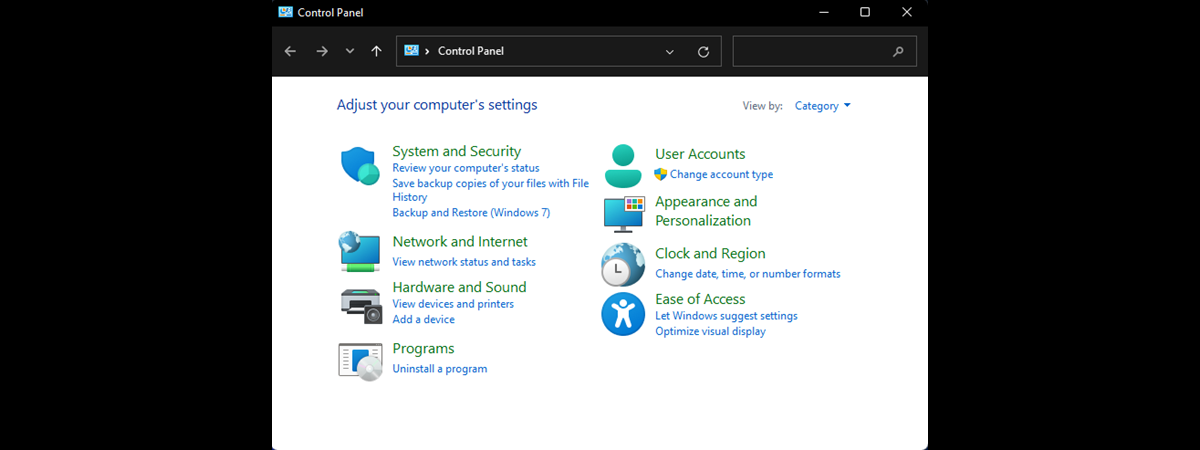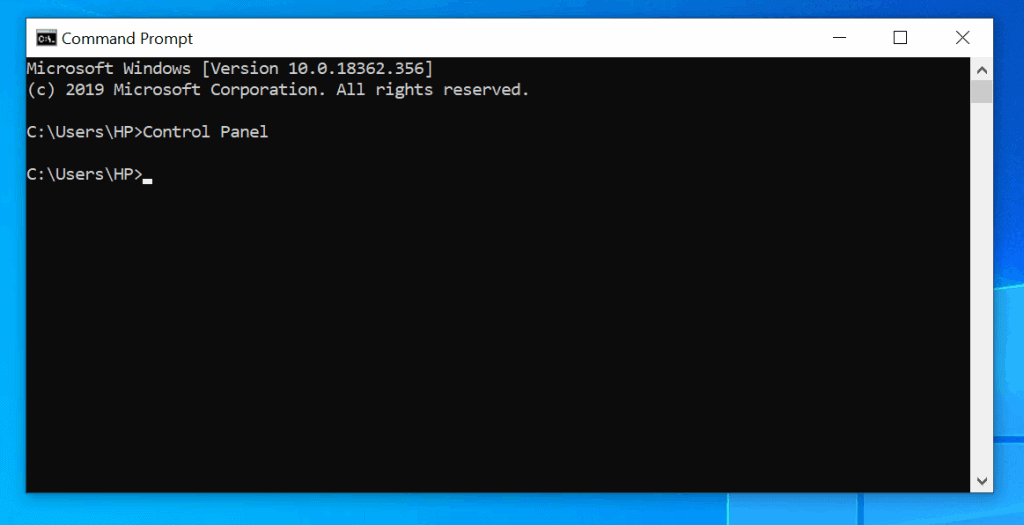

Right-click this new key called Control Panel and again go to New > Key and name this new key command. You need to create a new key that is called Control Panel – it is displayed with a regular folder icon.

Once you are here, right-click the shell key and go to New > Key. Navigate to the following path in the Registry Editor: HKEY_CLASSES_ROOT\Directory\Background\shell To do this, open Registry Editor by typing its name in the Start menu or by pressing Windows key + R and typing regedit.exe. Add a Control Panel entry to the Context MenuĪdditionally, you can also add Control Panel to the Context Menu and simply launch it by right-clicking on the desktop. Both of them launch Control Panel when clicking the OK button. Press Windows key + R and type either Control Panel or control.exe. Doing this and pressing Enter instantly takes you to the Control Panel in File Explorer. In File Explorer, you can easily launch Control Panel by typing its name in the address bar. You should notice that the Settings app is the top result for your search, and you need to click the second one to open Control Panel. Technically, even though Microsoft has removed the Control Panel shortcuts from the Start menu, you can still launch it from this location, only that an extra step is required.įor example, click the Start menu and type Control Panel. From Start menu / File Explorer / Run dialog
Where is control panel on windows 10 windows 10#
The classic Control Panel is still there in Windows 10 version 1803 (April 2018 Update), and even though it comes with fewer settings because many have already been migrated, it continues to be the preferred choice for some configuration options.įortunately, there are multiple ways to access the Control Panel in Windows 10 version 1803, and we’re going to detail three of them in the following paragraphs. One of Microsoft’s long-term goals in Windows 10 is killing off Control Panel, with all options being migrated to the modern Settings app.īy replacing Control Panel with Settings, Microsoft wants to make the latter the one destination for pretty much anything that’s related to customizing a Windows 10 device, embracing a more intuitive and straightforward approach that should also appeal to rookies.Īnd while options are gradually migrated to the Settings app, the Control Panel becomes harder to find in Windows 10, especially as Microsoft has removed the shortcuts from the Start menu and the Win + X menu.


 0 kommentar(er)
0 kommentar(er)
